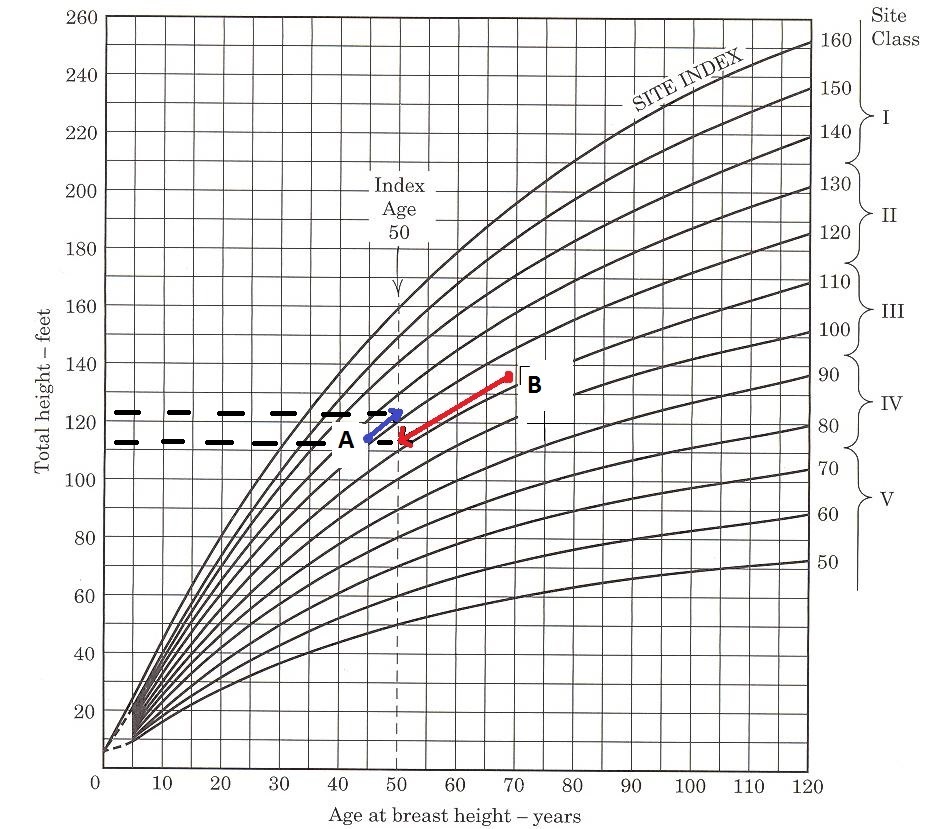6.6:. Determining Site Index from Field Measurements
- Page ID
- 20279
6.6. Determining Site Index from Field Measurements
Once height and age measurements are obtained for all site trees, site index can be determined.
1. Produce height and age measurements for suitable site index trees following the protocol from Section 6.5. Data for two Douglas-fir trees are listed below in Table 6.1.
| Table 6.1. Field Data for determining King’s site index for Douglas-fir. | |||
| Tree | Total Tree Height (ft.) | Breast Ht. Age* (yrs.) | Site Index (ft.) |
| A | 114 | 45 | 123 |
| B | 135 | 68 | 113 |
| * King’s site index uses breast height age (from a core sample taken at dbh). | |||
2. Plot each tree on the site index graph using the height and age as measured in the field.
3. Follow the curves forward or backward to the base age (50 years). In this case, we will “grow” Tree A to age 50, following the trends indicated by the nearest curves as we do so (Figure 6.6).

Figure 6.6. Tree A is “grown” from 45 years to 50 years. Estimated height at 50 years is ≈ 123’. Site Index for Tree A is 123. Tree B is traced back to 50 years. Estimated height at 50 years is ≈ 113’. Site Index for Tree B is 113. Thus two trees of unequal age can be compared on a relative basis to indicate how capable the forest site is of growing Douglas-fir trees. (Adapted from Smith et al. 1997.)
4. Determine the height of Tree A at age 50. This height, 123 feet, is the Site Index for that tree.
5. Repeat this for each site tree. When a site index value for each tree has been determined, an average can be calculated for the stand. The average for our two trees is 118 feet, which puts our trees on low site Class II land. It is not correct to calculate the average age and average height of the measured trees, and plot that to determine site index.


